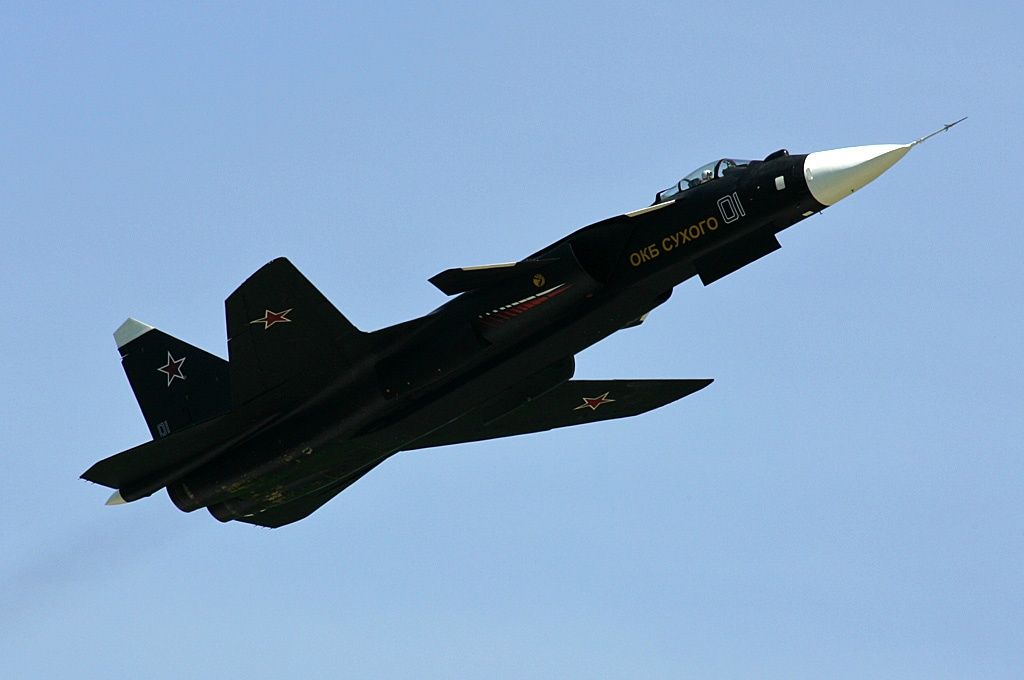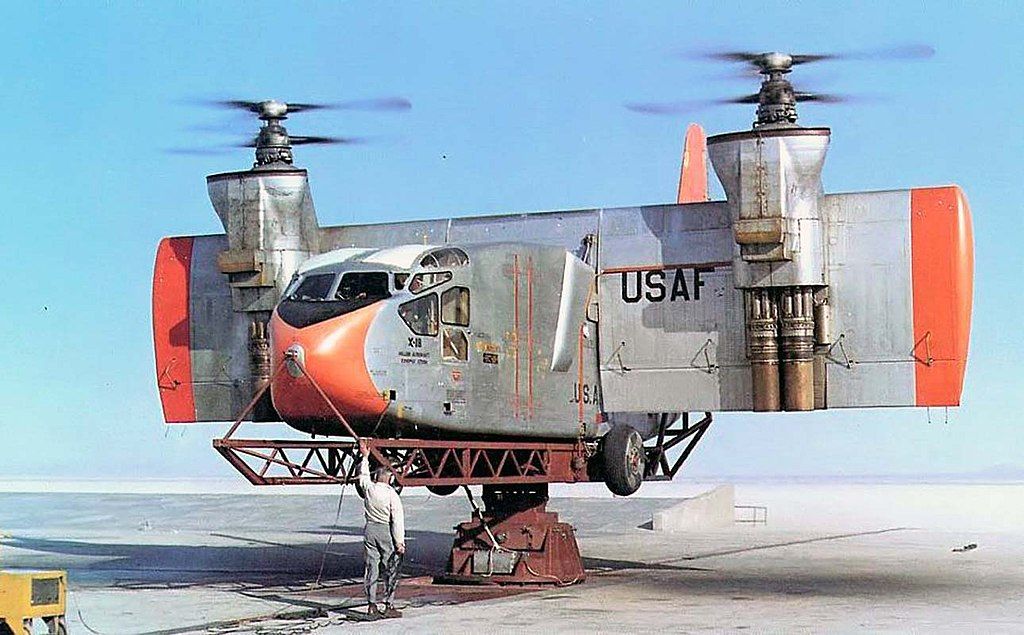Summary
- Su-47 Berkut featured fixed wings and fast speeds but only one was ever built – a real “WTF” moment.
- Hiller X-18 Propelloplane tested tilt-wing tech but crashed due to engine failures.
- Avro Canada VZ-9 Avrocar resembled a UFO, had VTOL capability, but only two were made due to performance issues.
Top 5 Lists are sure to generate controversy, whether for the items that are included in the lists and/or the ones that are excluded from the lists. My recent article on the “Top 5 Historic Military Aircraft That Changed Aviation” is living proof of this.
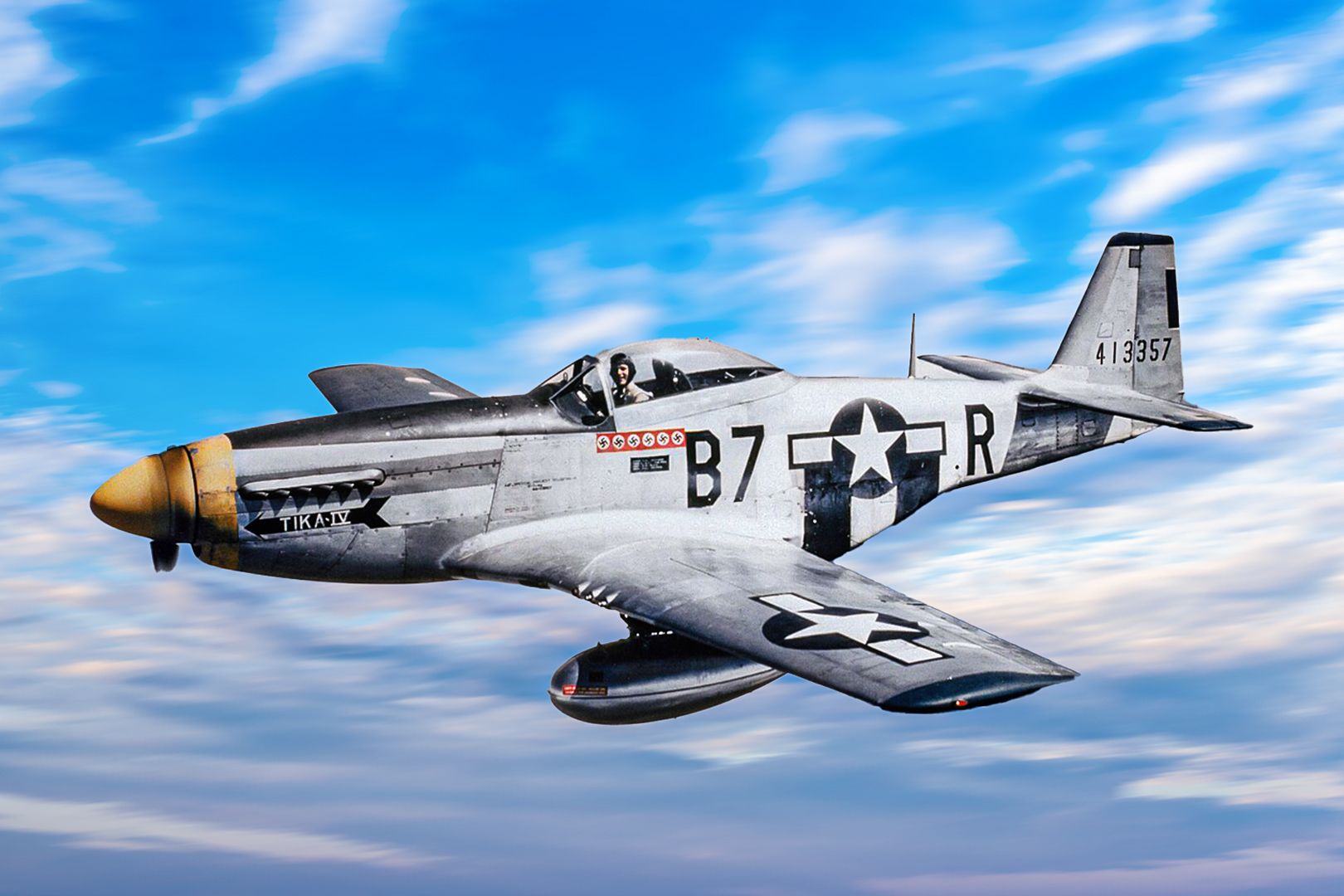
Related
Top 5 Historic Military Aircraft That Changed Aviation
Many military aircraft have made their mark on aviation history. But five in particular have been true game-changers.
That said, perhaps this newest list won’t be quite as controversial, though there will still be some difficulties in subjectively narrowing it down: the Top 5 Weirdest Military Aircraft of All Time. “Weird” doesn’t necessarily “bad” in terms of quality or operational success, and not necessarily “ugly” either; after all, “Beauty is in the eye of the beholder,” as the proverb goes (or as Kinky Friedman once put it, “Beauty is in the eye of the beer holder”).
But make no mistake, and these aircraft sure looked different, out-of-the-ordinary, unconventional (pick your label). Several of the source articles have more than five candidates, so I’ll do my darnedest to narrow things down to the warbirds that give me the biggest “Whoa, WTF?” sentiment.
5
Sukhoi Su-47 Berkut (Сухой Су-47 Беркут; “Golden Eagle”) (NATO Reporting name: “Firkin”)
What the firk is a “firkin?!?!”
This one caught my eye, not just because of her name but because of her moniker. I mean, granted. There’s nothing a’tall unusual about a warbird bearing a bird-of-prey moniker (see what I did there?). But for me. The Russian word “Berkut” also stands out for me because it was the title of an equally weird 1987 action-adventure novel by Joseph Heywood, set at the end of WWII, with the premise being that Adolf Hitler faked his death in that banker and went “on the lam;” the title is the codename of the protagonist, the leader of an elite team of Soviet agents handpicked by Joseph Stalin to hunt der Führer down.
(Whilst doing the research for this article, I also learned that “Berkut” was the name for was Ukrainian system of special police (riot police) of the Ukrainian Militsiya within the Ministry of Internal Affairs from 1992 -2014; the unit was subsumed by Russia after Vladimir Putin’s annexation of Crimea.)
Anyway, regarding Berkut the weirdo warplane, MiGFlug describes her like this:
“The Su-47 Berkut is an experimental fighter jet built by Russian company Sukhoi in 1997, it features a pair of fixed wings that sweep forwards. The high lift-to-drag ratio of the wing design provides enhanced manoeuvrability at supersonic speeds.”
Just how fast are these “supersonic speeds?” 1,400 mph (2,200 kph/1,200 kn/Mach 2.21) at altitude (59,000 ft/18,000 m). The problem? Only one airframe was built — making her maiden flight on September 25, 1997 — before the program was canceled. The Su-47 was developed from the Su-37 “Flanker-F” AKA “Terminator.”
And just what the “firk” is a “Firkin,” some of you may be asking? Merriam-Webster provides us with two definitions:
“1: a small wooden vessel or cask
2: any of various British units of capacity usually equal to ¹/₄ barrel”
4
Hiller X-18 “Propelloplane”
Alas, this hybrid airplane/helo didn’t amount to a Hill o’ beans
This was the one entry that my Editors specifically asked me to include (hence the artsy pic atop this article), and since I rather like actually getting paid to write, I’m more than happy to oblige!
This aircraft was named for her designer, Mr. Stanley Hiller (November 15, 1924 – April 20, 2006), founder of the eponymous Hiller Aircraft Company, headquartered in Firebaugh, California. In a July 2023 article for We Are the Mighty appropriately titled “9 of the weirdest military aircraft that actually flew,” author Jessica Evans writes:
“Often considered the prototype for the Osprey, the Hiller X-18 was the first test-bed for tilt-wing and VSTOL [vertical short take-off and landing] technology. However, the X-18 didn’t handle wind gusts very well, and since the engines weren’t cross-linked, every engine failure resulted in a crash.”
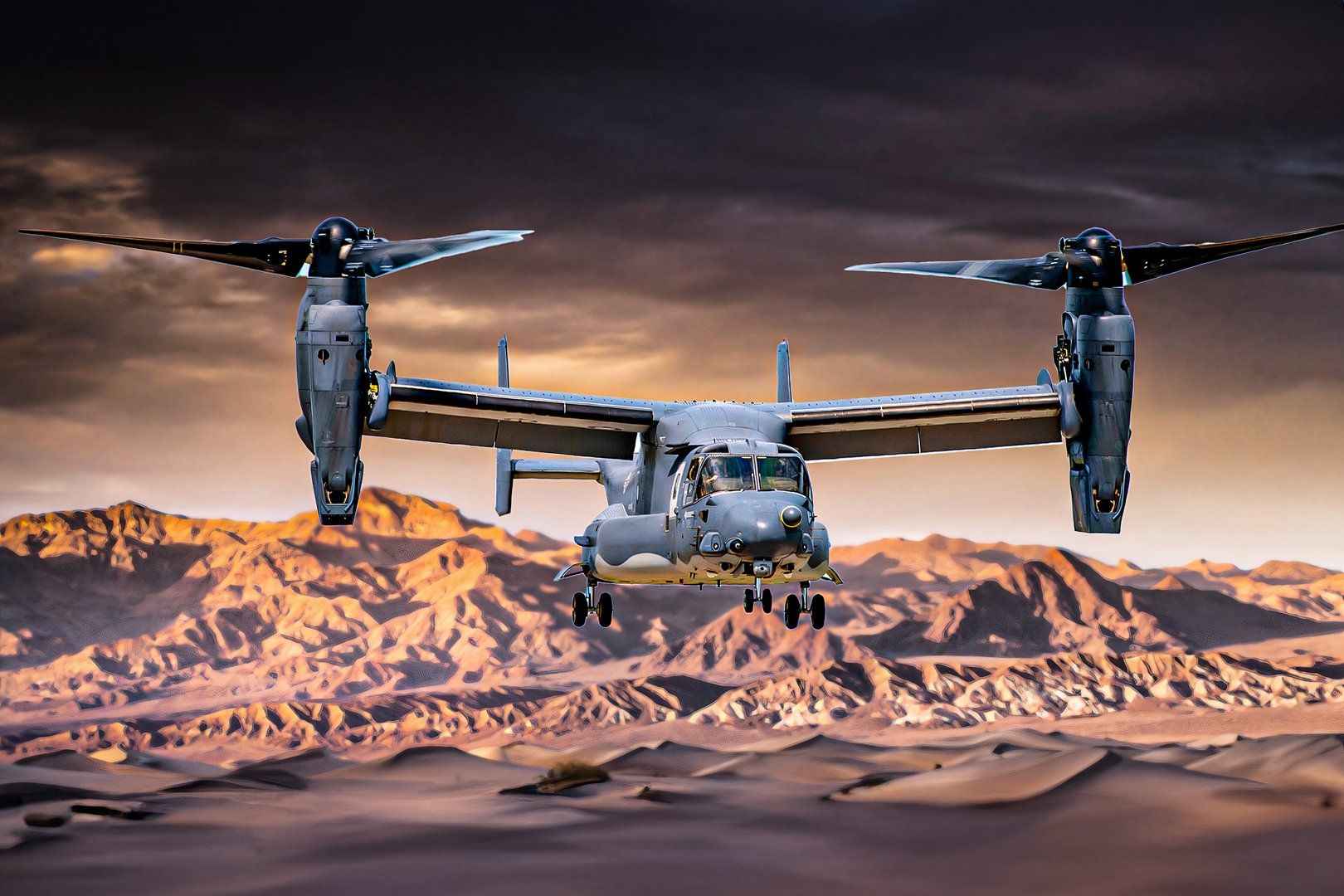
Related
Is The V-22 Osprey A Helicopter Or A Plane?
The aircraft has characteristics of both.
Mr. Hiller, for his part, as a testament to his creativity and P.R. skills alike, nicknamed his invention the Propelloplane. Conceivably. he could’ve just as easily named the craft the “Frankenplane” or the “Frankencopter,” as she was the flying machine equivalent of Frankenstein’s monster: as noted in the following YouTube video, she was constructed from scavenged parts, including a Chase YC-122C Avitruc fuselage, and turboprops from the Lockheed XFV-1 and Convair XFY-1 Pogo experimental fighter programs. Hiller’s rationale behind that aeronautical smorgasbord was to both accelerate construction time and tamp down costs.
Alas, Hiller’s improvisations turned out to be for naught, for the reasons quoted in Ms. Evans’s article. Only one was built, making her maiden flight in November 1959; she was scrapped in 1964.
3
Avro Canada VZ-9 Avrocar
“The Truth Is Out There, Scully”
Okay, you know that any real-world aircraft resembling a flying saucer (or if you prefer, “UFO,” “UAP,” etc.) and having an Area 51 nexus has to be on this list. (Cue David Duchovny as FBI Special Agent Fox Mulder in “The X Files“: “The Truth Is Out There, Scully;” “I Want To Believe”). An article for The Grizzled (no author or publication date listed) titled “50 Strangest Aircraft Ever Made” (that’s right, folks, a whopping 50, not just 5) elaborates:
“This flying saucer was one of the world’s first successful vertical takeoff and landing (VTOL) aircraft. Developed as a secret U.S. military project in 1959, partly at the legendary Area 51 complex, the Avrocar was way ahead of its time.”
That 1959 maiden flight for the Avrocar (coincidentally the same year as the X-18) puts her 12 years after the infamous Roswell incident (which to this day is officially chalked up to a weather balloon).
If the “Avro” portion of the name sounds familiar, it should: Avro Canada was the Canadian subsidiary of the British aircraft manufacturer that produced such famous bombers as the WWII-era Lancaster and the Cold War-era Vulcan. So with such a prestigious brand name and historical track record, the Avrocar was a surefire success, oui?

Related
Why Was The Avro Vulcan Bomber So Loud?
One of the most distinctive-sounding warplanes of the Cold War was the Avro Vulcan bomber with her famous “howl.” What’s the science behind that howl?
Er, well…the Avrocar’s production numbers equaled that of the Su-47 and X-18 combined, i.e., a whopping **two**. Alas, this alien-looking aircraft was also destined for failure, being retired in September 1961. The problem(s)? Serious unresolved thrust and stability problems that seriously degraded her performance.
2
North American F-82 Twin Mustang
Two Mustang heads are better than one, right?
Two-headed snakes exist in Mother Nature, but not two-headed horses, however, in the aviation world. A mechanical two-headed horse certainly existed: the North American F-82 Twin Mustang. Since my last Top 5 List article included the original Mustang fighter plane, i.e., the North American P-51D, it’s only logical to include the “sequel” (so to speak) in this Top 5 list.

Related
Why Did North American Aviation Build The F-82 Twin Mustang?
A rather unique long-range escort fighter.
Unlike her direct ancestor, the Twin Mustang didn’t see World War II combat, nor did she attain the same degree of success. That said, the F-82 *did* attain a much greater degree of success than the previous three aircraft on this list, as she actually made it past the prototype stage (making her maiden flight on June 26th, 1945) and into the production phase, with a total of 272 being built.
- Maximum speed: 461 mph (742 km/h, 401 kn) at 21,000 ft (6,400 m)
- Cruise speed: 286 mph (460 km/h, 249 kn)
- Range: 2,240 mi (3,600 km, 1,950 NM)
- Service ceiling: 38,900 ft (11,900 m)
For good measure, though the Twin Mustang missed out on the WWII action, she made up for lost time during the Korean War, winning the very first American aerial battle of that conflict by shooting down a Yak-11 and two Lavochkin La-7s. By the time of the armistice signing, F-82 drivers were officially credited with 20 air-to-air kills against North Korean aircraft.
Alas, through no fault of her own, the Twin Mustang was rendered obsolescent by jet-to-jet combat during that same war, and the U.S. Air Force officially retired her on November 12, 1953. She had the additional distinction of being the last American piston-engine fighter ordered into production by the USAF.
Five of these wonderfully weird warbirds survive today, including one airworthy specimen, Serial No. 44-83887, currently on loan to the Valiant Air Command Warbird Museum at Space Coast Regional Airport in Titusville, Florida.
1
Aero Spacelines B377PG Super Guppy AKA “Pregnant Guppy”
The long-lasting plane on this list
Saving the best for last, with “best” in this context, meaning having the longest-lasting and most enduring career. Plus, this being an admittedly subjective list after all, some personal sentimentality is coming into play here: this is the only plane on the list that went operational in my lifetime (1980), and what’s more, since I was an aspiring marine biologist at the time (at the tender age of five), I thought it rather cool that a plane would bear the name of a fish.
The Guppy left enough of an impression to be included in both the MiGFlug and The Grizzled articles. Regarding what I said about this plane having long-term success, MiGFlug notes the following:
“However, not all of these cutting-edge craft were destined to be consigned to the dustbin of history…The enormous Super Guppy Turbine cargo plane has been flown since 1980 and was acquired by NASA in 1997.”
“It was nicknamed ‘the pregnant Guppy’ by engineers due to its bulbous shape – created by bolting an entirely new fuselage on top of an existing plane…According to NASA, the supersized aircraft, designed to carry large loads such as other aircraft and space station components, continues to attract amazement wherever it flies.”
A total of five of these ginormous mechanical “flying fish” (so to speak) have been built; one of the SG variant, four of the SGT variant.
|
Fuselage Length |
143 ft 10 in (43.84 m) |
|
Wingspan |
156 ft 3 in (47.63 m) |
|
Height |
48 ft 6 in (14.78 m) |
|
Cargo Bay Dimensions |
111 ft × 25 ft × 25 ft (33.83 m × 7.62 m × 7.62 m) |
|
Max Takeoff Weight |
170,000 lb (77,111 kg) |
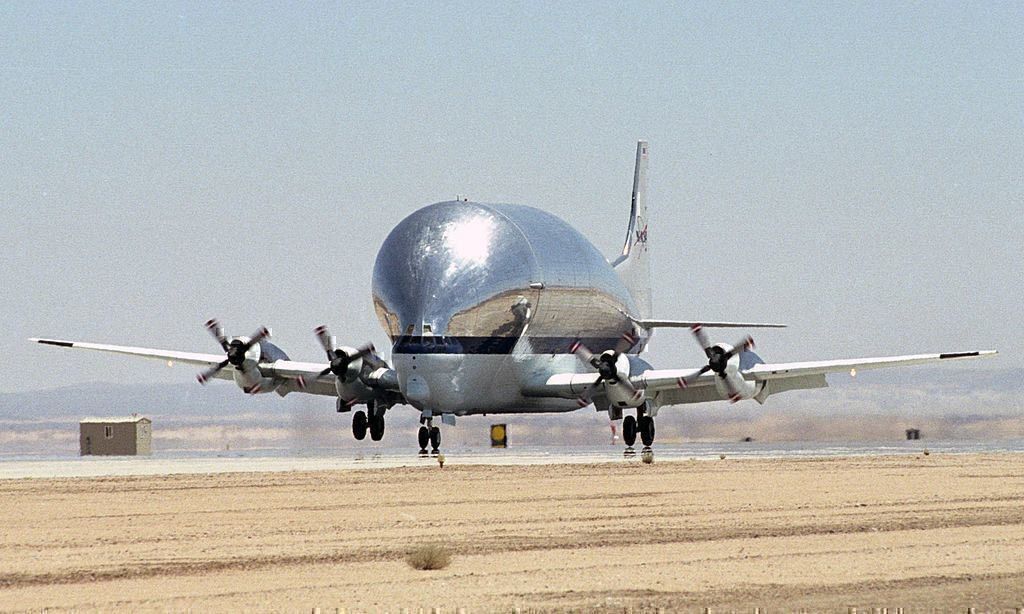
Related
Why Was NASA’s Super Guppy Flying To Ohio?


